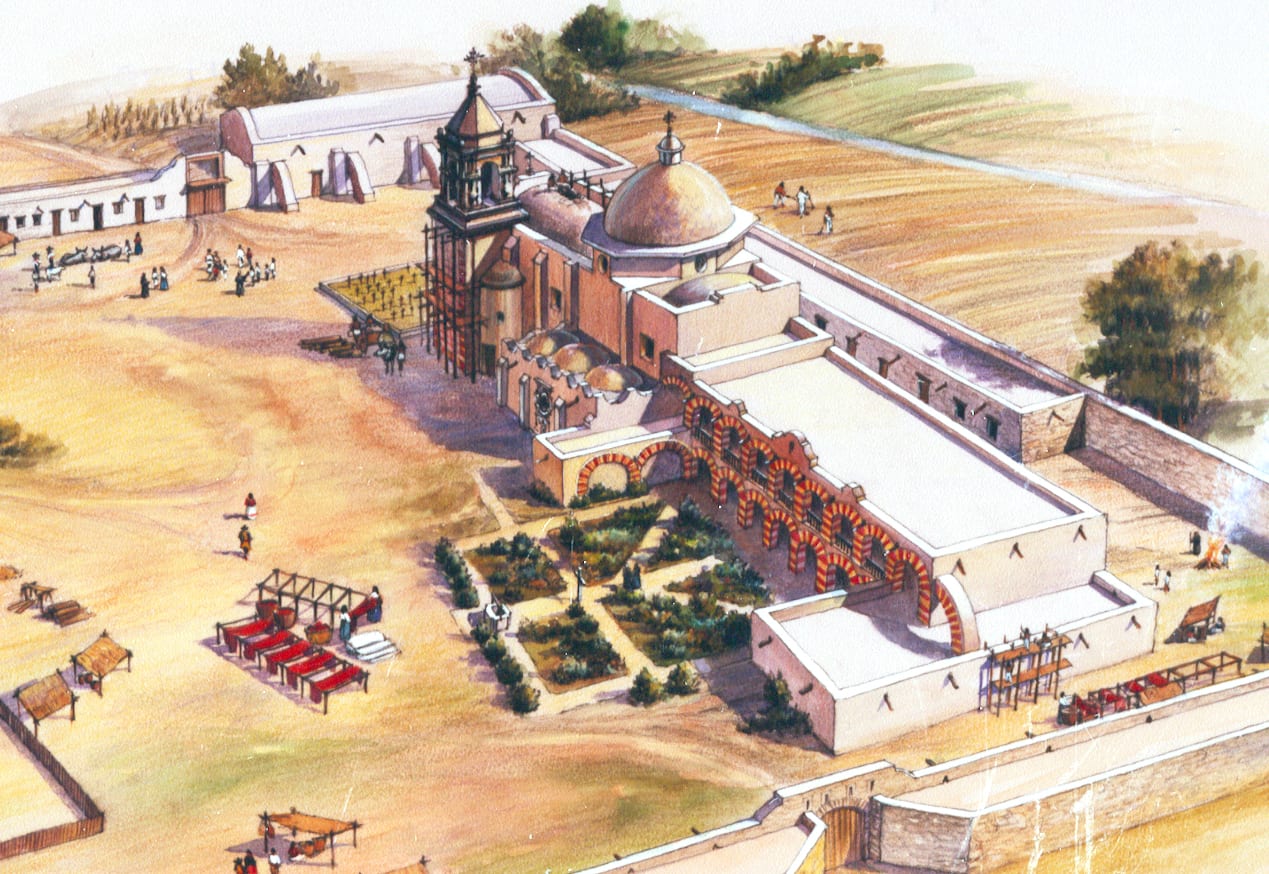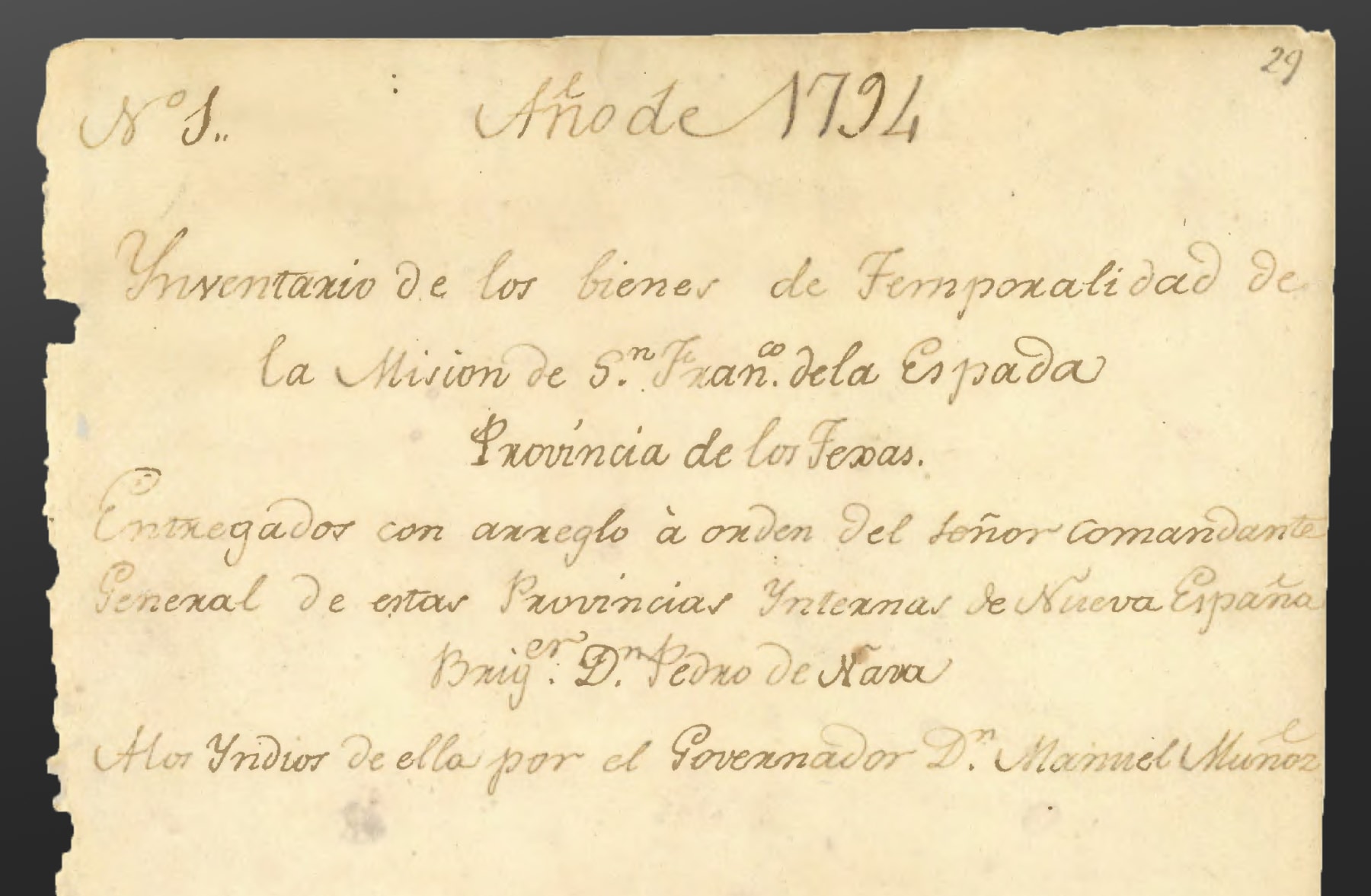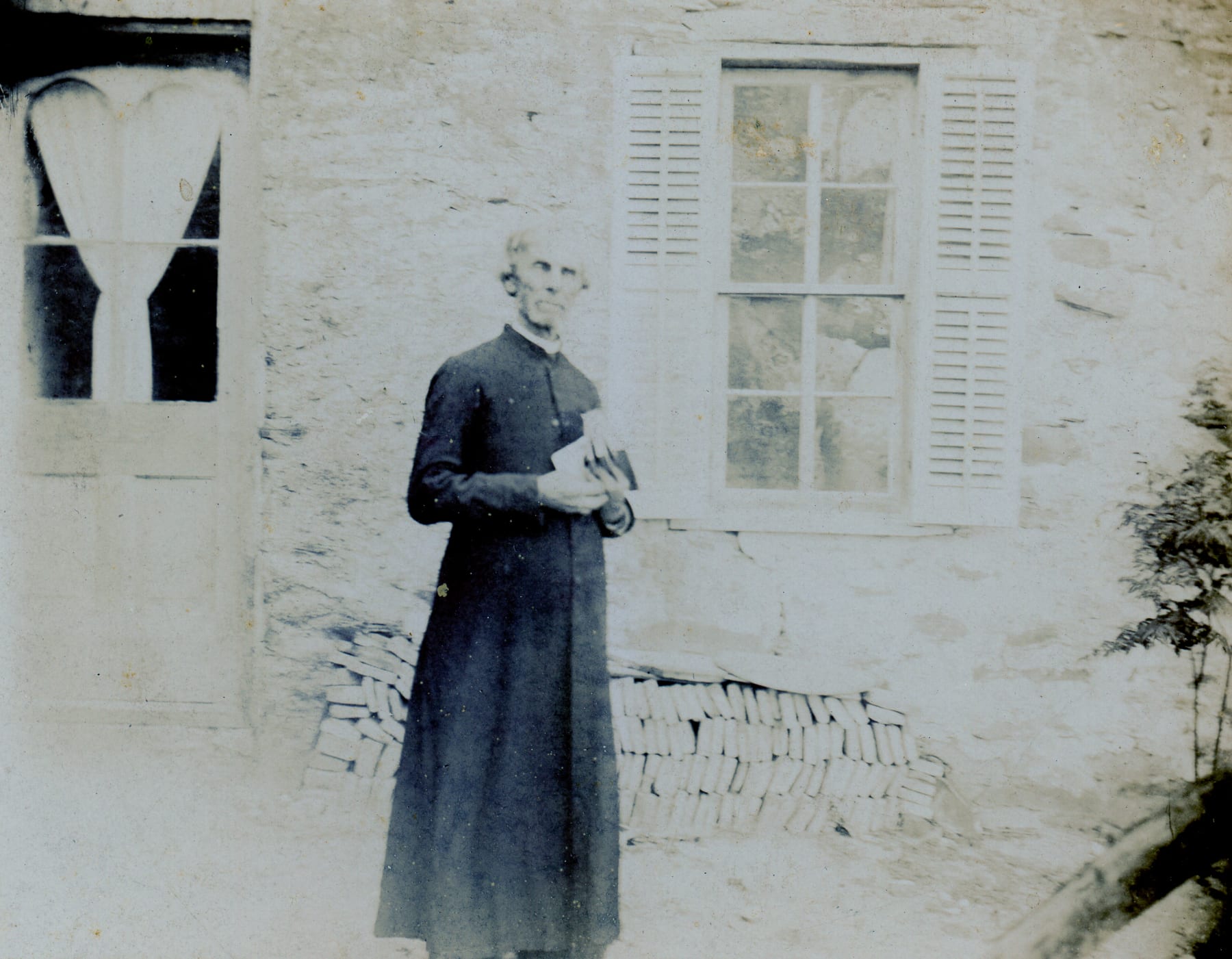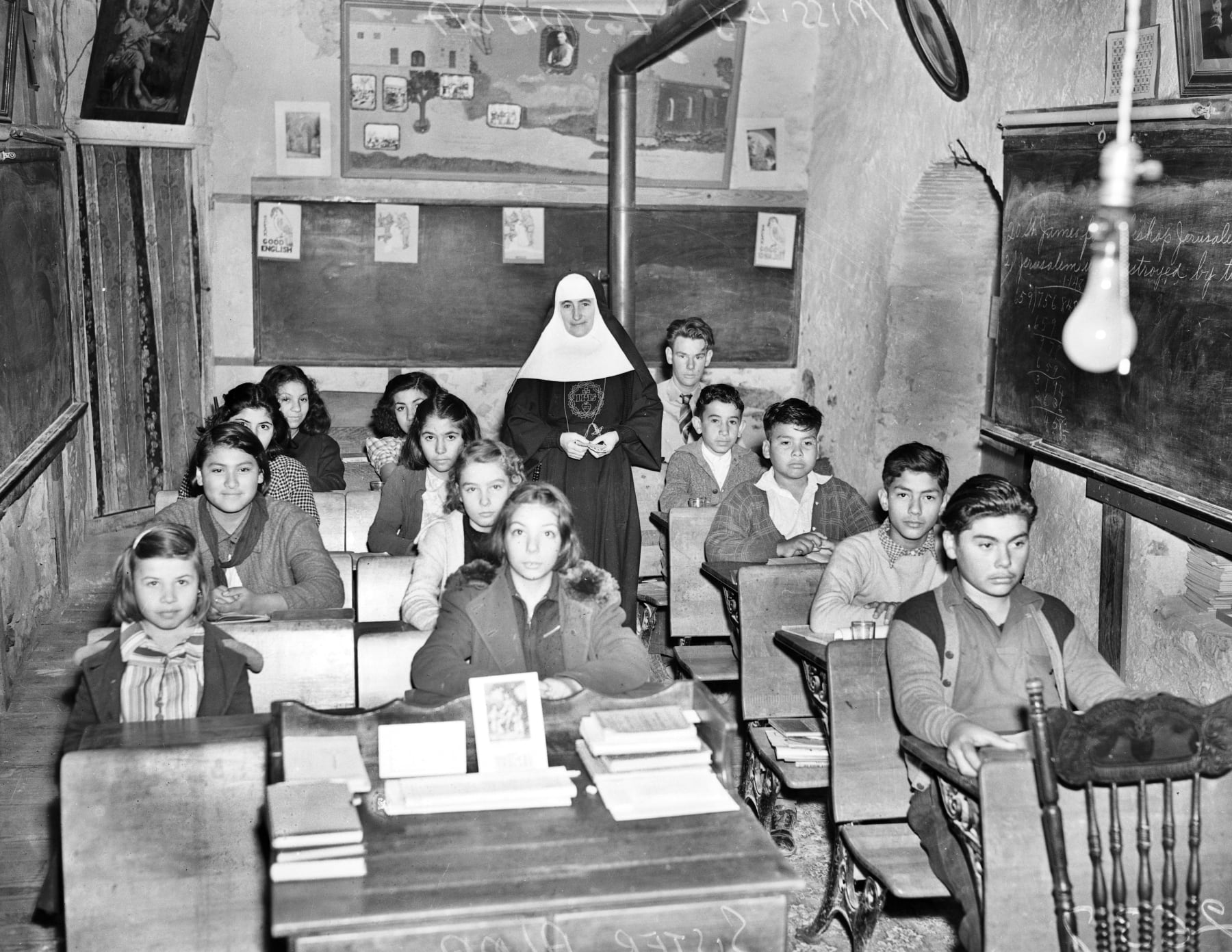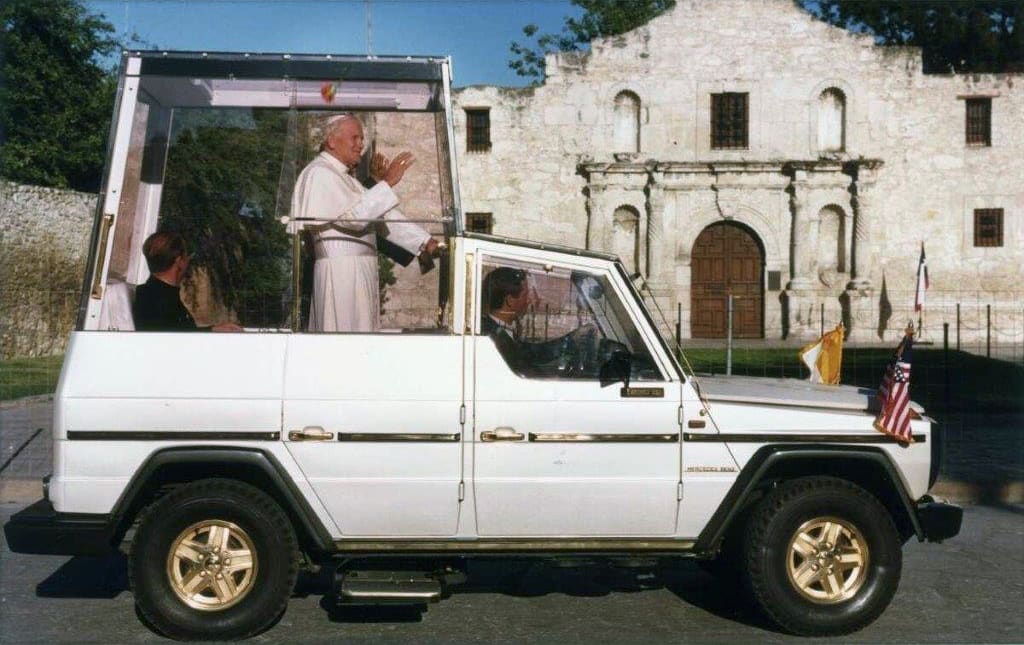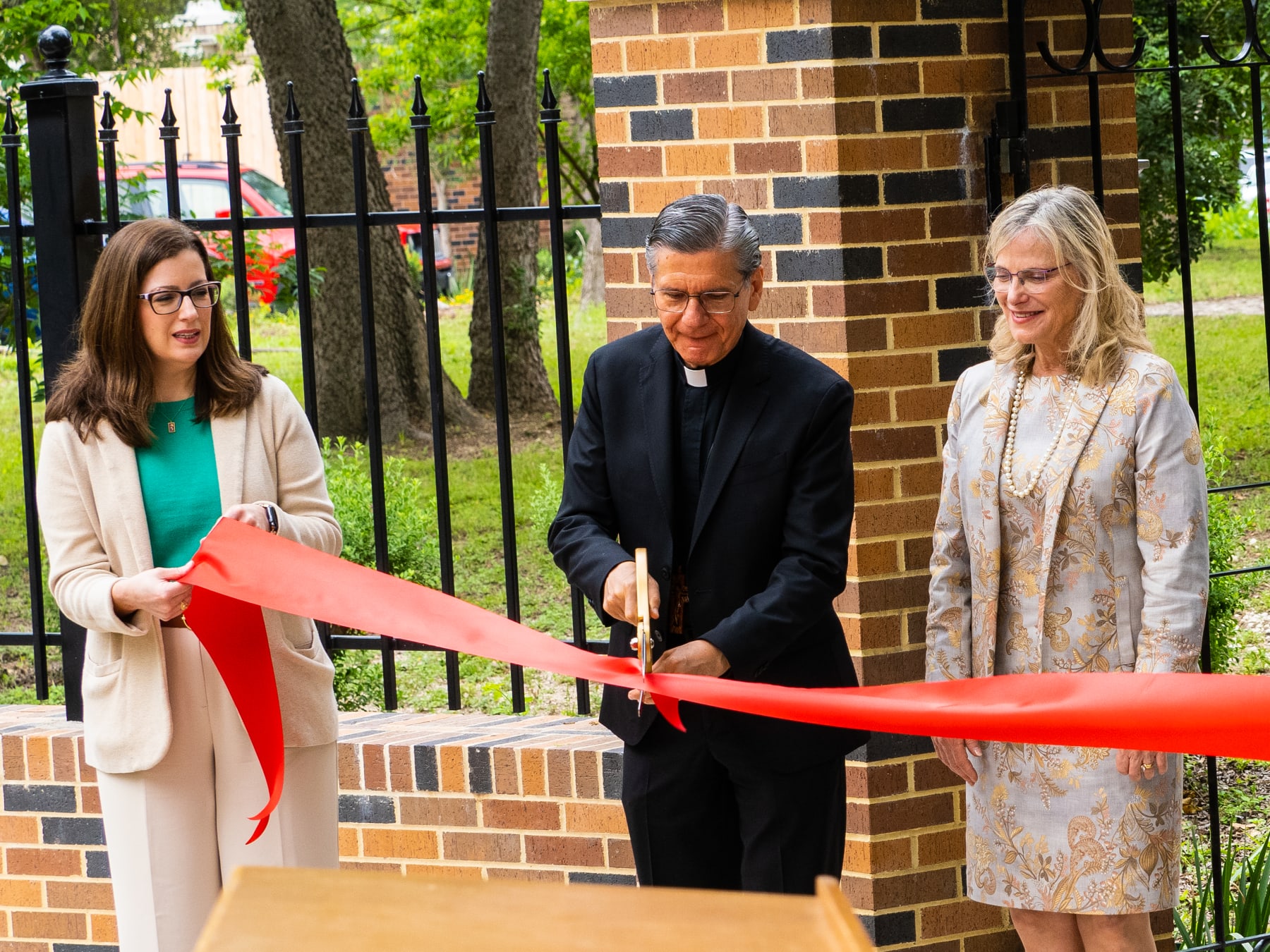The Missions Period
1690 – 1793
For 10,000 years bands of native peoples inhabited the lands in South Texas. But by the late 1600s, many of these groups faced extinction from drought, European diseases, and regional conflicts. During this time Franciscan missionaries journeyed from New Spain (modern-day Mexico) to establish dozens of missions across what is now Texas. Their goal was to create self-sufficient communities where native peoples could be incorporated into Spanish culture and the Catholic faith. The missions were more than churches. They were also villages, forts, schools, farms, and ranches.
Franciscans attempted to establish several missions in east Texas. However, the isolation of these settlements made it difficult for them to thrive.
1690 - 1719
The Spanish established a new settlement at the headwaters of the San Antonio River. Named San Antonio, it included Mission San Antonio de Valero, today known as the Alamo.
1718
The Venerable Padre Antonio Margil de Jesus, a Franciscan missionary who had helped establish the East Texas missions, founds a new mission south of San Antonio: Mission San José y San Miguel de Aguayo.
1720
Three of the East Texas missions are reestablished in San Antonio: Mission Concepción, Mission San Juan Capistrano, and Mission San Francisco de la Espada.
1731
Settlers from the Canary Islands arrived in San Antonio to establish the first civil settlement in the Spanish province of Texas. Seven years later, in 1738, they began construction on San Fernando Church. The church was completed in 1750.
1731
A smallpox and measles epidemic swept through the San Antonio missions. Many mission Indians died, others fled.
1739
An aqueduct, is completed spanning Piedras Creek and bringing water from the San Antonio River to Mission Espada.
1745
By the 1750s all four missions were well established.
1750s
Missions across Texas began to experience large drops in population. The numbers of Indians who were most open to recruitment declined due to disease and high infant mortality. The San Antonio missions began recruitment of more distant groups, but the declines continued.
1760s – 1780s
San José's current church was completed.
1782
Secularization and Decline
1794 – MID-1800s
As missionaries, the role of the Franciscans was to lead only the initial establishment of the mission settlements. The communities were then expected to mature from religious-run missions into fully Spanish and Christian towns, run by non-religious leaders. The direction of church life was also to be transferred from missionary religious orders to the Catholic diocesan church. This process—called secularization—began in the late 1700s. Unfortunately, in the years that followed, the missions were largely abandoned and the buildings fell into disrepair.
Spanish authorities issued orders to partially secularize the San Antonio missions. The missions’ land and holdings began to be distributed to community members.
1794
The full secularization of all San Antonio missions was complete. Land and goods were distributed to the residents of the missions.
1824
During the Texas Revolution the San Antonio missions were the site of several important events. Mission Espada was occupied by Texian volunteers as a fortification against the Mexican Army. The 1835 Battle of Concepción, called “the first major engagement of the Texas Revolution,” was fought on the grounds of the mission. And at Mission Valero, the massacre of Texian volunteers at the Battle of the Alamo was a turning point in the war, and Texas history.
1835–1836
After decades of neglect and damage from fires and conflicts, many of the buildings of the former missions were in ruins.
1850s
Restoration and Renewal
LATE 1800s – TODAY
By the late-1800s, San Antonio's beautiful mission buildings had largely fallen into ruin. Yet, gradually life began to return to them. At first dedicated individuals worked alone to rebuild the missions. But in time larger restoration efforts were organized by religious and civic leaders, with the support of state and federal programs. This restoration work did more than simply preserve the missions. It also renewed the spiritual life in them, fulfilling the vision that first guided the Franciscans over 300 years ago.







